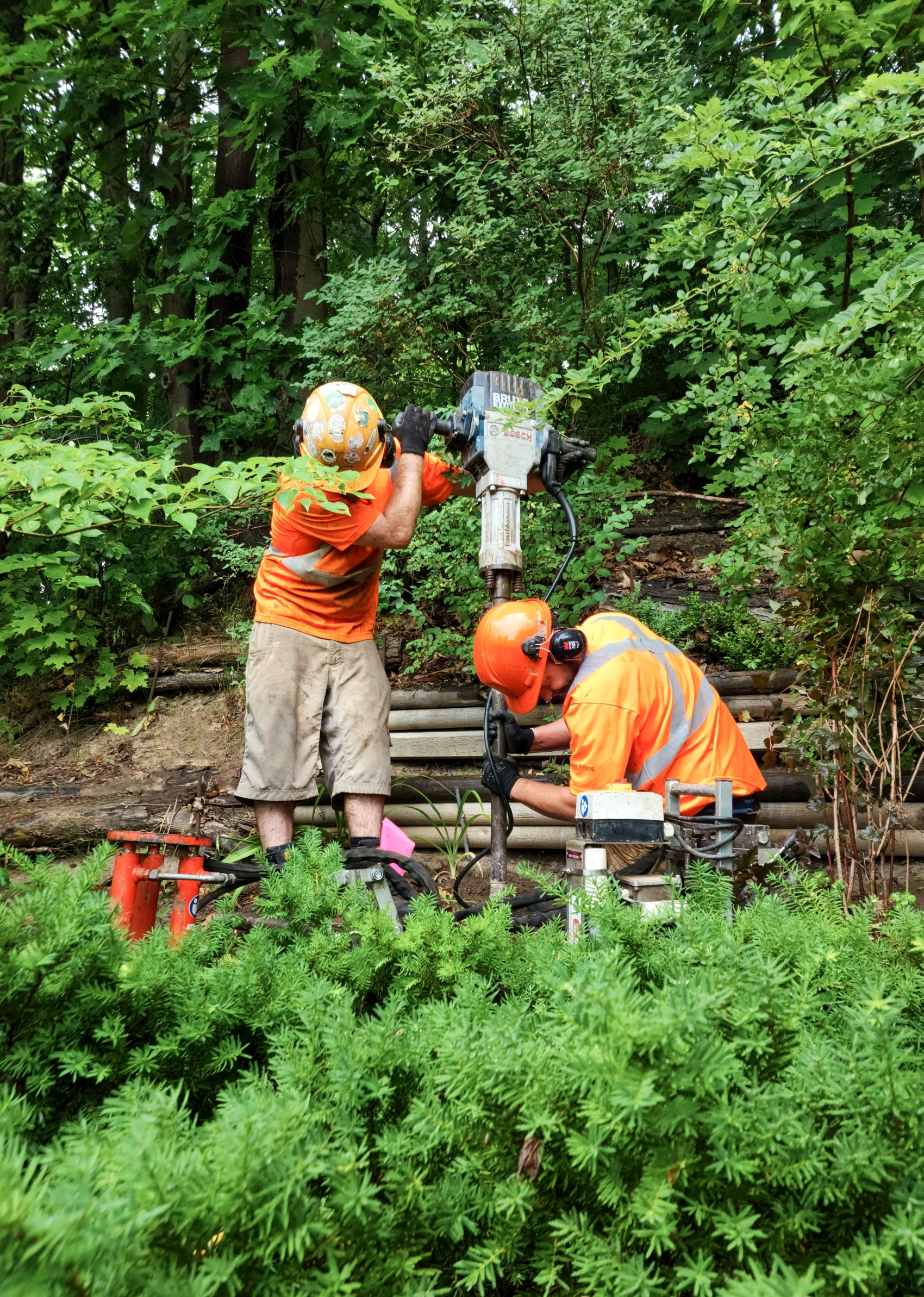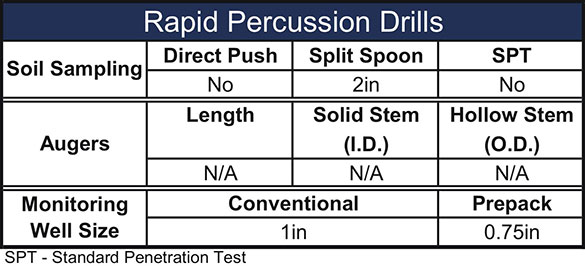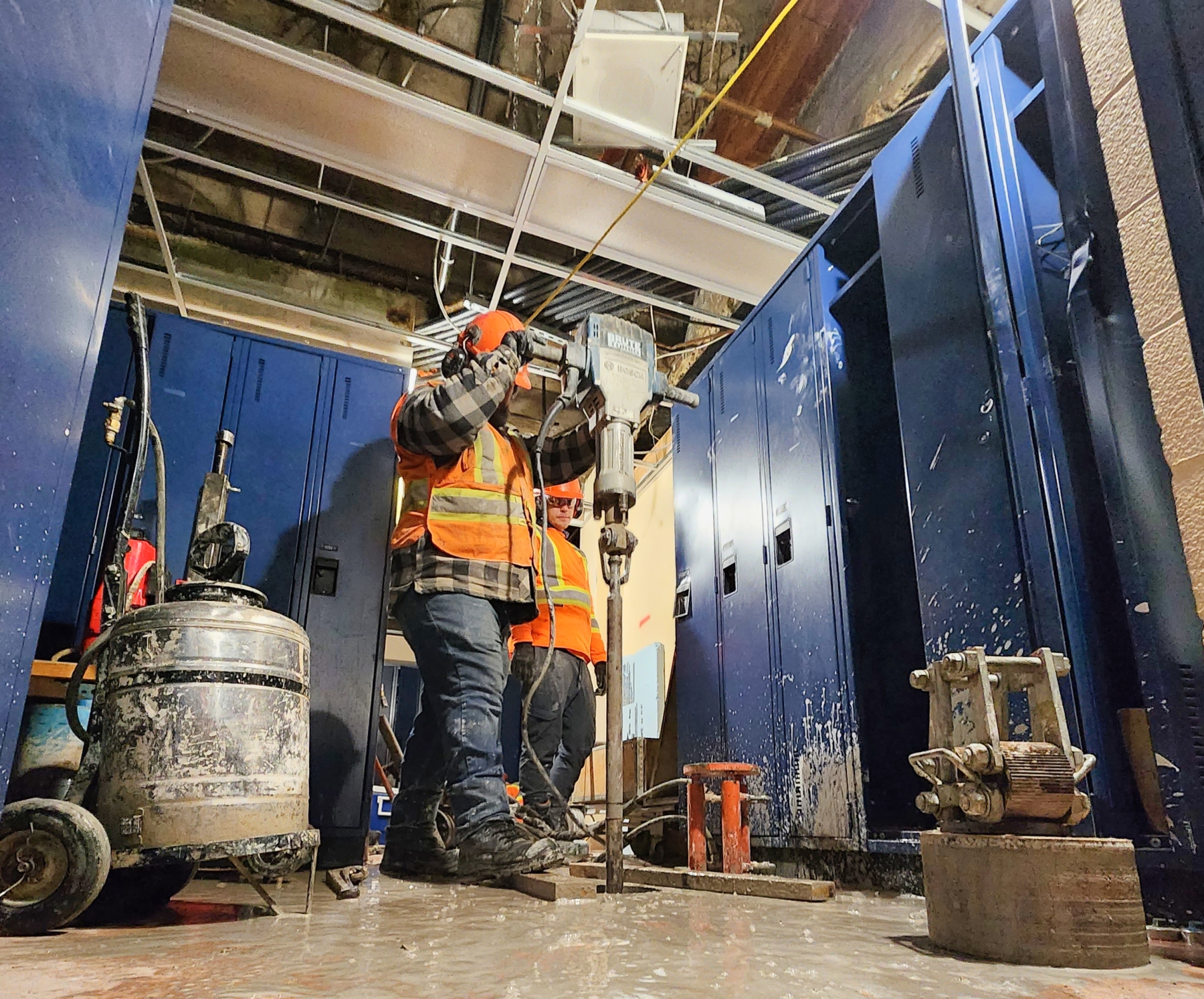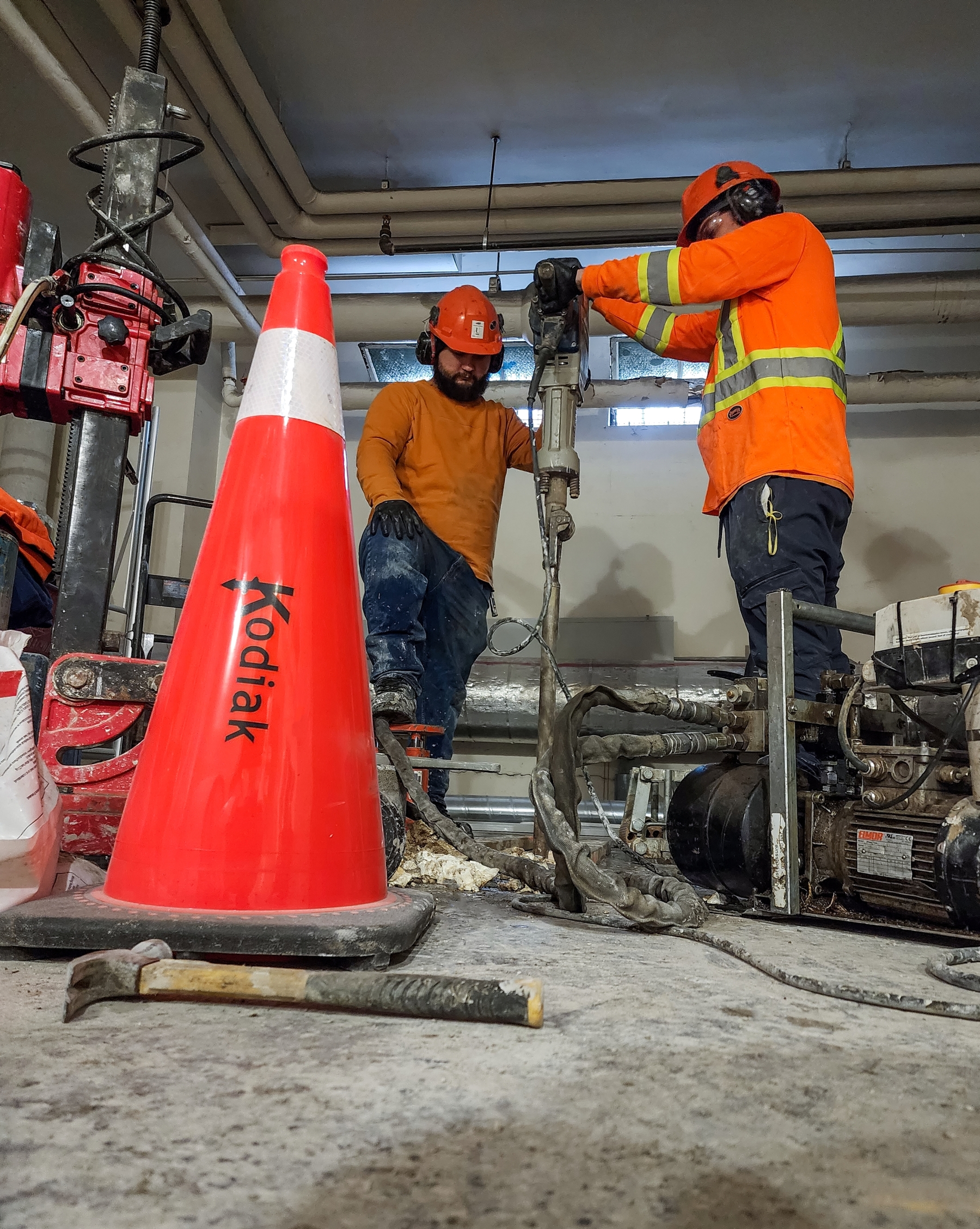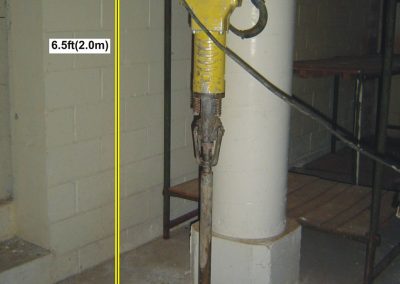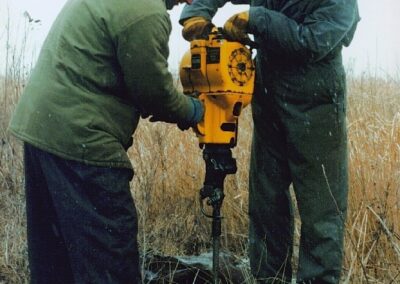Rapid Percussion Drills
Very Low Head Clearance
Goes Anywhere
Shallow Holes
No SPTs
Electric
Rapid Percussion Drills
Very Low Head Clearance
Goes Anywhere
Shallow Holes
No SPTs
Electric
Rapid Percussion Drills
Rapid percussion drills refer to a standard method of drilling, which operates by pounding in a standard 2″ split spoon by rapid percussion. Additional drilling rods are added on an iterative basis to collect samples from increasing depths.
Although these units can be used to depths of 20 feet or greater, they are much more effective for depths of 10-15 feet or less. The primary difference between these drills is the power source.
Pionjar: Powdered by an onboard gasoline engine (best suited to outdoor and remote locations)
PEP (Portable Electric Percussion): Powdered by a 15 amp, 110 volt electric generator (best suited for indoors locations or easy access outdoor locations)
Rota-Hammer: Powered by an 18 hp hydraulic power unit (best suited for indoors locations or easy access outdoor locations)
The Principal Advantage of These Units
Tooling: All of these units use standard AW drilling rods (1.75 inches), which greatly reduces rod and spoon breakage that is common with 1-inch rods, commonly used by other drillers.
Size: These units can go virtually anywhere a person can go. Popular areas for their use include basements, slopes, remote areas, tight areas around machinery or other obstacles, up or down stairs, shallow surface sampling, and other areas not accessible by our larger units.
Mobility: Mobilization between boreholes is rapid, with very little setup time.
Concrete & Asphalt: Penetrated with a rock bit on the Pionjar, or core machine with diamond bit for indoor applications (Rota-hammer, PEP).
Emissions & Noise: Pionjar is relatively loud and has a rich fume; it is used for outdoor areas only. Rota-hammer and PEP have no fumes, and reduced, intermittent noise at borehole location, as power sources can be positioned outside.
Monitoring Wells: Small diameter wells can be installed; large enough for waterra, bailers, and water level/interface meter probe.
Cross Contamination: The Pionjar uses a gas/oil mixture at the borehole location, while the Rota-hammer uses a vegetable based hydraulic oil and the PEP does not use fluids at the borehole.
Click on image below to view larger size:
(Please refresh the page if the images do not show up)
FAQs
Drilling
Locate FAQ
Well Regulation 903
Is your borehole location proving challenging with a truck-mounted drill? We get it.
Contact Kodiak for a solution.
Resources

